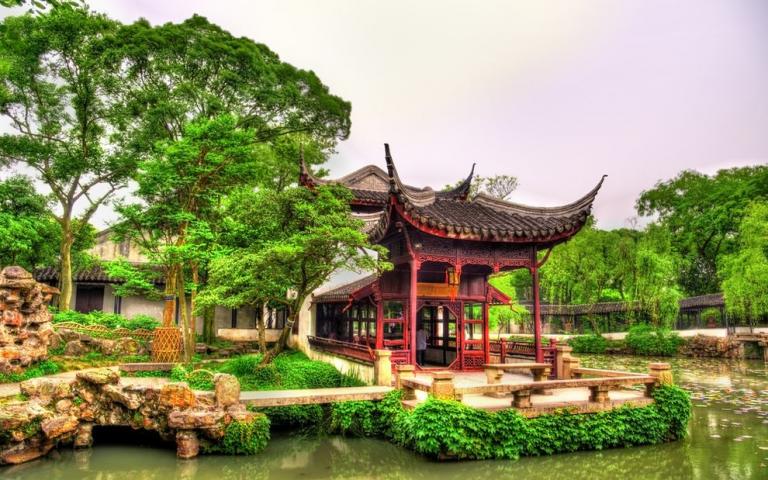Chinese gardening is famous in the world
3 min readChina is one of the three major seedbeds of the world’s horticulture (the other two are West Asia and Greece).
Song of Lingtai Terrace in Major Festal Songs of Classic of Poetry recorded that “the king is in Lingyou”,i.e. as earlyas Shang dynasty the state of Zhou already had its primary garden-Lingyou. At that time,a garden was based on natural landscaping with artificial ponds and pavilions. In Qin and Han dynasties an artificial garden was built on the primary garden with a palace to form a”garden-like palace”, in which garden and palace were inter-inclusive, for example, the Shanglin Garden and Jianzhang Palace. As of Jin dynasty the Chinese word for “garden”first appeared, when a garden gave priority to buildings inside rather than to natural landscapes. In Tang and Song dynasties, enjoyable landscape gardens were constructed for fashion, and then in Ming and Qing dynasties humanistic landscape gardens were preferred. Gradually, there formed the ancient oriental landscape gardens, theChinese landscape garden being the most representative, which gave priority to natural landscapes.

With its unique styles Chinese traditional gardens distinguish themselves in the world featuring the following major landscaping techniques:① Emphasis on natural landscape full of indirectness and poetic and artistic conception,with very few geometrical graphics.②Division of the whole garden into different areas each being inter-accessible while separately located,to form a diversified garden.③ Full use of the opposite scenery layout and related technologies for channeling in water to make ponds,springs,waterfalls or brooks,to divert or converge them,and to pile up stones and earth for making hills with grotesque summits,pumped waterfalls,caves,faults,gullies etc.;④ Integration of old trees,exotic flowers and herbs to add beauty to the original landscape of hills,water and buildings.⑤ Opposite sceneries comprising varied landscape garden structures,such as pavilion,stage,storied building,cabinet,hall,house,temple,tower,shed,bridge, corridor, boat-shaped base, chair, table, palace, and wall, in all shapes. To take the example of corridors, there were straight ones, flexuous, devious, watery, bridged, sloped, and over-lapping corridors, which appeared harmonious with the landscapes, trees and flowers; there was also a large collection of steles and inscribed tablets to match the poems and paintings. Summing up the rich experience in making Chinese landscape gardens,a treatise about horticulture entitled The Craft of Gardening was written, during Ming dynasty.
Chinese gardens also developed into a variety of styles. The gardens in the south of the Yangtze River are represented by Humble Administrator’s Garden, Lion Grove Garden and Lingering Garden in Suzhou city, SentPleasure Garden in Wuxi city, and Individual Garden in Yangzhou city, which are characterized by small bridges and brooks, winding paths leading to a tranquil place in seclusion, blue tiles and white walls, and exquisite woodcarving and brickcarving. In contrast, the gardens in north China are represented by the Summer Palace and the Temple of Heaven in Beijing, and the Mountain Resort inChengde city, featuring vast area, magnificent momentum, and arrangement of palaces and courts among hills and water, and a massive, stable, neat and colorful architectural style. The gardens in the south of the Five Ridges got their reputation from the four gardens(Hillshed Garden in Panyu county, Clearlight Garden in Shunde city, Leisure Garden in Dongguan city, and the Stars Cottage in Foshan city) inGuangdong province. The style of these gardens is between the south and the north; for example, the winged corners of the eaves bear mild and concise curves, in between the imposing presence of the north and the elegance of the area south of the Yangtze River; the decoration of the pavilions is elegant and gorgeous with exquisite and magnificent carving in the windows and doors, absorbing the advantages of both the south and north and even including the western garden’s advantages (e.g. Hillside Garden) with some geometrical arrangement of the landscape space. The gardens are generally divided into east and west parts, with the eastern composed of a square pond and courtyard while the western also contains a pond and courtyard but in an octagonal shape.









